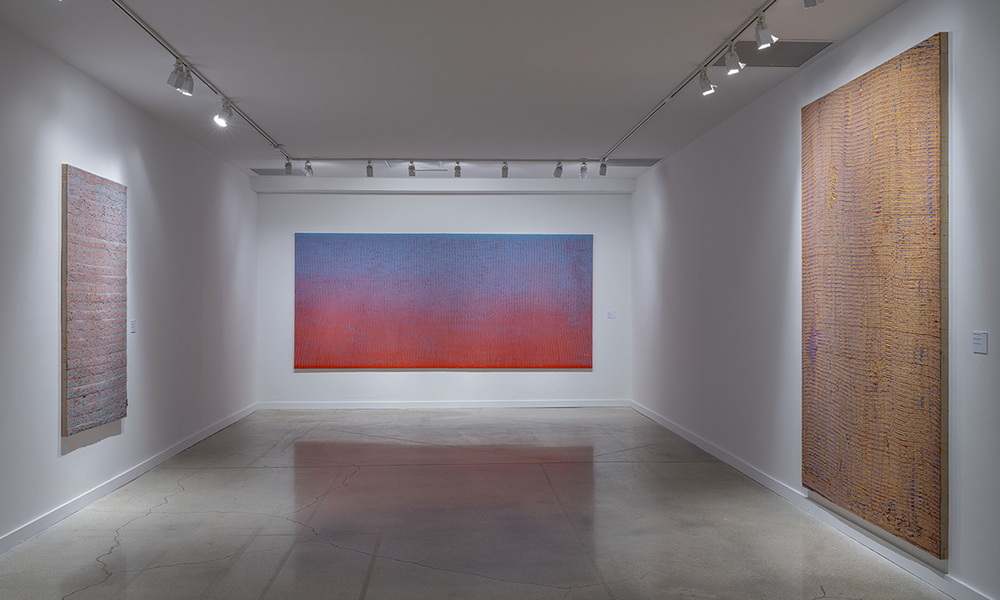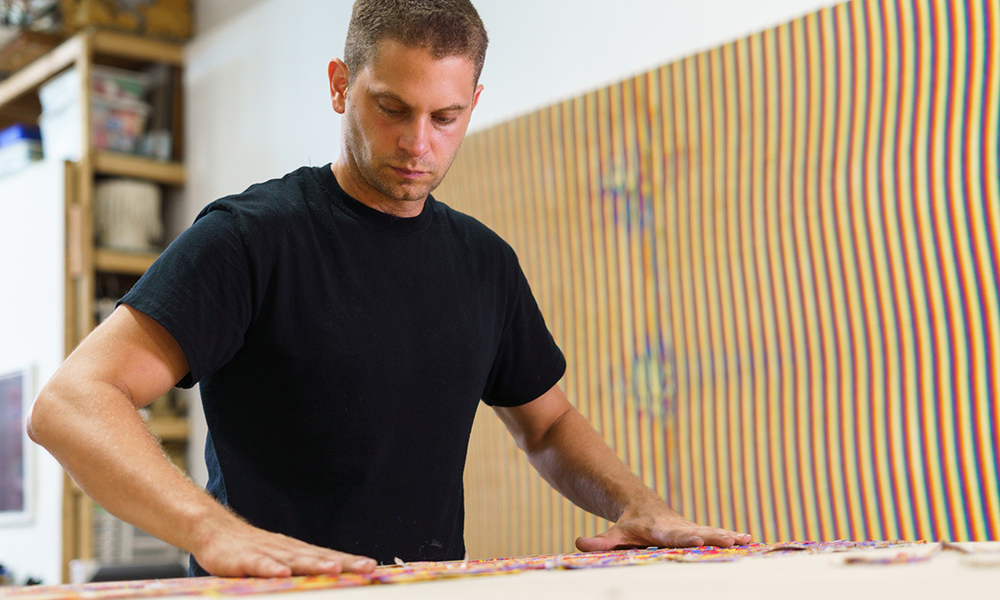Project Talks
Loriel Beltrán in Conversation
with Juan Ledezma
January 13, 2022, 6:30 PM
Museum of Art and Design at MDC
Project Talks
Loriel Beltrán in Conversation with Juan Ledezma
Art historian Juan Ledezma speaks with artist Loriel Beltrán about his exhibition Constructed Color, on view at MOAD until May 1, 2022. Their subjects include the materials and construction of Beltrán’s paintings, the artist’s structural use of color and its relation to other types of creation, how we perceive time in abstraction, and the connections of Beltrán’s work to practices outside the realm of picture-making. The discussion also touches upon the correspondences between Beltrán’s paintings and Latin American modernism.
Born in Caracas, Venezuela, in 1985, Loriel Beltrán moved at age fifteen to Miami. He earned his BFA from the New World School of the Arts at MDC. Beltrán’s work has been included in exhibitions at the Pérez Art Museum Miami; the Institute of Contemporary Art, Miami; the Museo de Arte Acarigua-Araure in Venezuela; and the Fabric Workshop and Museum in Philadelphia, and he has had solo exhibitions at Central Fine and the non-profit Locust Projects in Miami. Beltran was also a co-founder and co-director of the artist run gallery and collective Noguchi Breton (formerly GUCCIVUITTON). Loriel Beltrán: Constructed Color is the artist’s first solo museum exhibition since a small project at the Wolfsonian’s Bridge Tender’s House in 2007.
Juan Ledezma received his PhD in the History of Western Art (twentieth and twenty-first-century) from Columbia University in 2009. His dissertation discusses Russian constructivism’s engagement in the design of exhibition spaces. In 2006, he curated The Sites of Latin American Abstraction, an exhibition that examined the relation between Latin American concrete art and urban photography as two modes of constructing a collective viewer. Similar endeavors were Vibration (Bundeskunsthalle, Bonn, 2010) and Gebaute Vision (Haus Konstruktiv, Zurich, 2011). Ledezma has presented his scholarship in numerous public forums and has written book chapters on the design of exhibition spaces in the Soviet Union, the perceptual agency of modernism, and Latin American abstraction’s contribution to the formation of a critical public sphere through strategies of spectatorial engagement.


